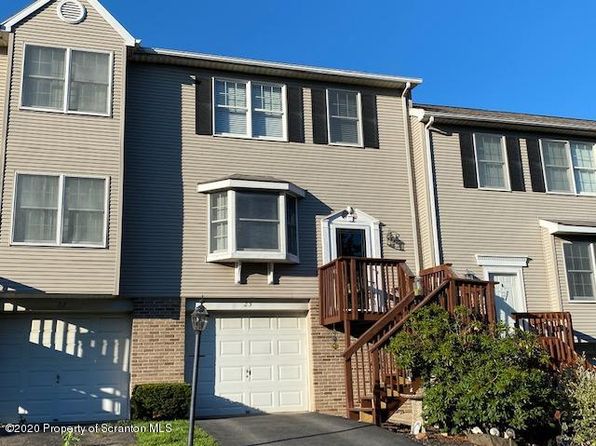
For many years, banks have used the Debt Service Coverage Ratio [DSCR] as a way to assess risk regarding the viability of a borrower to make mortgage payments after subtracting normal expenses from income. The larger the ratio, the more comfortable the bank felt making a loan. For example, let’s presume that a borrower was considering applying for a $650,000 loan amortized over 20 years at 4% with a bank. The monthly payment would be about $3,939 per month. If the apartment building grossed $8,000 and the normal expenses were $3,000 per month, the Net Operating Income [NOI] would be $5,000 per month. The DSCR would be 1.27 [$5,000/$3,939]. Of course, the bank would also look at the Loan to Value [LTV] in conjunction with the DSCR. Presuming the value of the apartment building was $1,000,000, a 65% LTV loan would be acceptable to most banks.
In previous years, a lot of banks were willing to allow a DSCR as low as 1.00, meaning that the NOI exactly covered the banks monthly payment; however, after The Great Recession in 2008, banks pulled back substantially in their lending practices and raised the DSCR to 1.15, then 1.25, and then many settled on 1.35. This severely constrained many borrowers’ ability to finance their real estate projects. They either had to come up with more cash, or they had to negotiate for a longer term [25 or possibly 30 year amortization periods] as well as requesting a lower interest rate. The combination of increasing the amortization period and lowered interest rates allowed borrowers to borrower the amount they initially requested in order to meet the more stringent 1.35 DSCR.
The problem with the above negotiations [from the bank’s perspective] is that the bank was still at the same LTV, and, in fact, one could argue that the bank was not compensated for the benefit bestowed upon the borrower [lowering the rate and/or stretching out the amortization period]. Just because the borrower met the new DSCR requirement did not put the bank in a safer position. In addition, the problem with the DSCR is that it only addressed the ability of the borrower to make the monthly mortgage payment. It does not address the LTV risk for the bank or give the bank a ROR should the bank be faced with foreclosing on the property.
Prior to 2008, banks were willing to lend at a high LTV. Historically, 60-65% was the norm; however, with competition came increased LTVs. Lower interest rates appeared to assist the bank with risk due to the relatively low [historical] mortgage payments. However, when prices dramatically decreased, many lenders were faced with borrowers who were upside down on their loans. The banks needed to figure a new way to assess risk for future loans.
Along comes a relatively new ratio – the Debt Yield Ratio [DYR] to allow banks to access risk/reward from an additional perspective. This DYR effectively shows the bank what rate of return [ROR] it would earn if it had to foreclose. In our example above, the annual NOI for the apartment building was $60,000. Since the loan request was $650,000, the DYR was a healthy 9.23%. Although no bank wants to foreclose [as they have minimum reserve requirements that affect their lending ability when loans go into default], the bank still has to face the fact that there are times when it will need to go down the foreclosure path. When CAP rates are in the 4-6% range, a DYR above 8% gives the bank some leeway should it need to sell the property at less than fair market value [FMV] and recoup its entire loan with no loss. You can see that, although most real estate investors focus on CAP rates, the DYR zeroes in on what the ROR the bank will earn upon foreclosure. The DYR also ignores the interest rate the bank charges as well as the amortization of the loan.
The DYR is vital in today’s low interest rate environment. As interest rates dropped over the previous 10 years, values substantially increased. Lenders do not want to get caught up in situations where the FMV plummets due to increased interest rates [all other factors staying the same]. Thus, the DYR focuses in on the ROR the lender would receive if it were to receive the property upon foreclosure. Of course, if interest rates rise, the bank would have liked to had a larger DYR, but it is similar to an investor being happy with a bond that is locked in at 10%, even if interest rates rise were to 12%.
By requesting a high DYR, the bank will automatically limit its LTV. As banks get skittish, they will raise their DYR. One large bank has already increased its DYR to 11%. Other factors that may lower the bank’s DYR may be the location of the real estate. Desirable and stable areas may command a lower DYR. Of course, these same areas also command lower CAP rates as well.
Just as rates may vary when considering higher vs lower LTVs, rates quoted by banks may vary based on higher vs lower DYR. This makes sense when considering that banks price their products based on risk.
From a borrower’s perspective, negotiations will now have to be looked at from not only the CAP rate and the DSCR rate, but the DYR as well. Borrowers who have the ability to put down a larger down payment should take into account all three ratios, as a little extra down payment may go a long way in receiving attractive terms from the bank.







